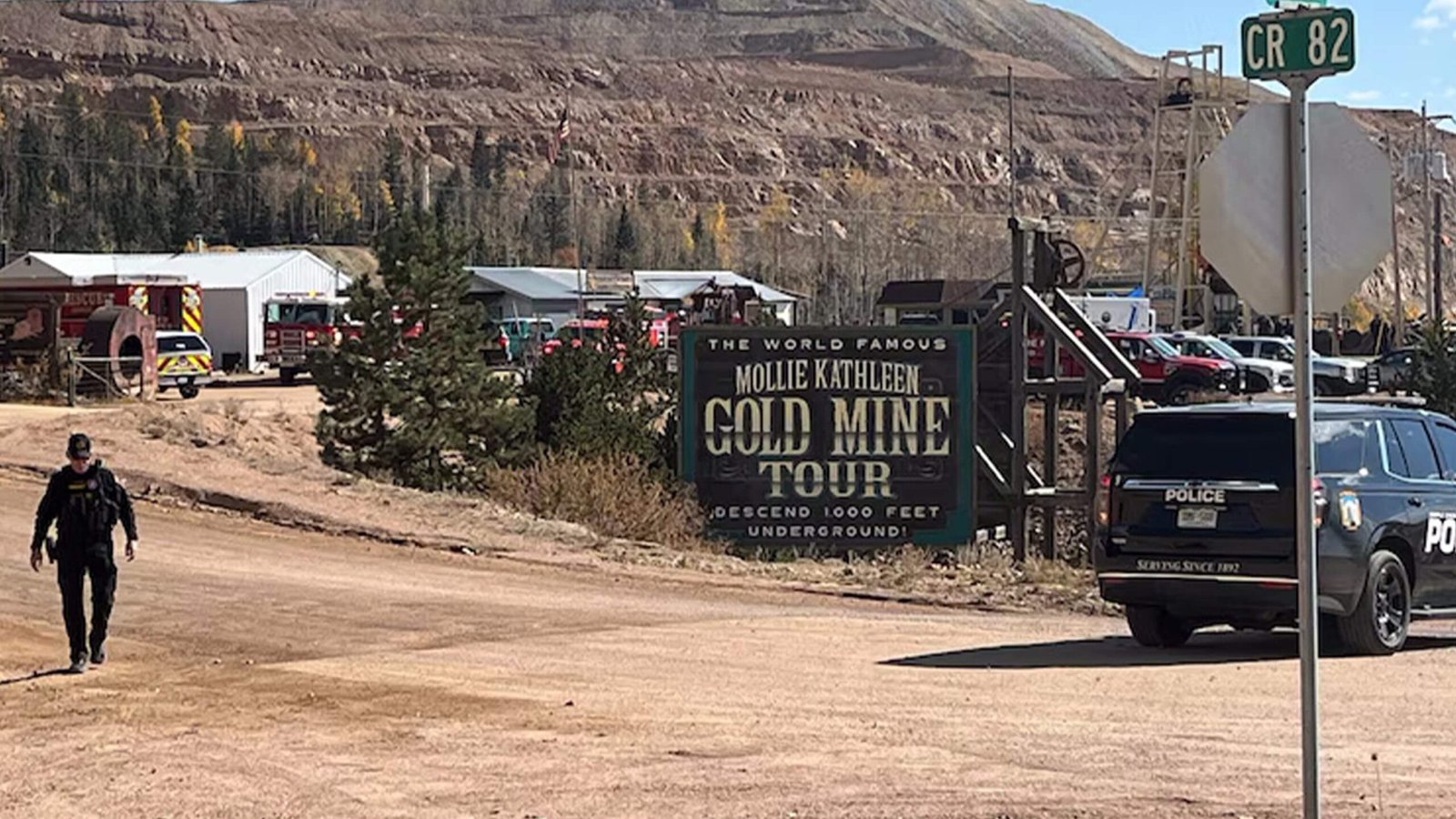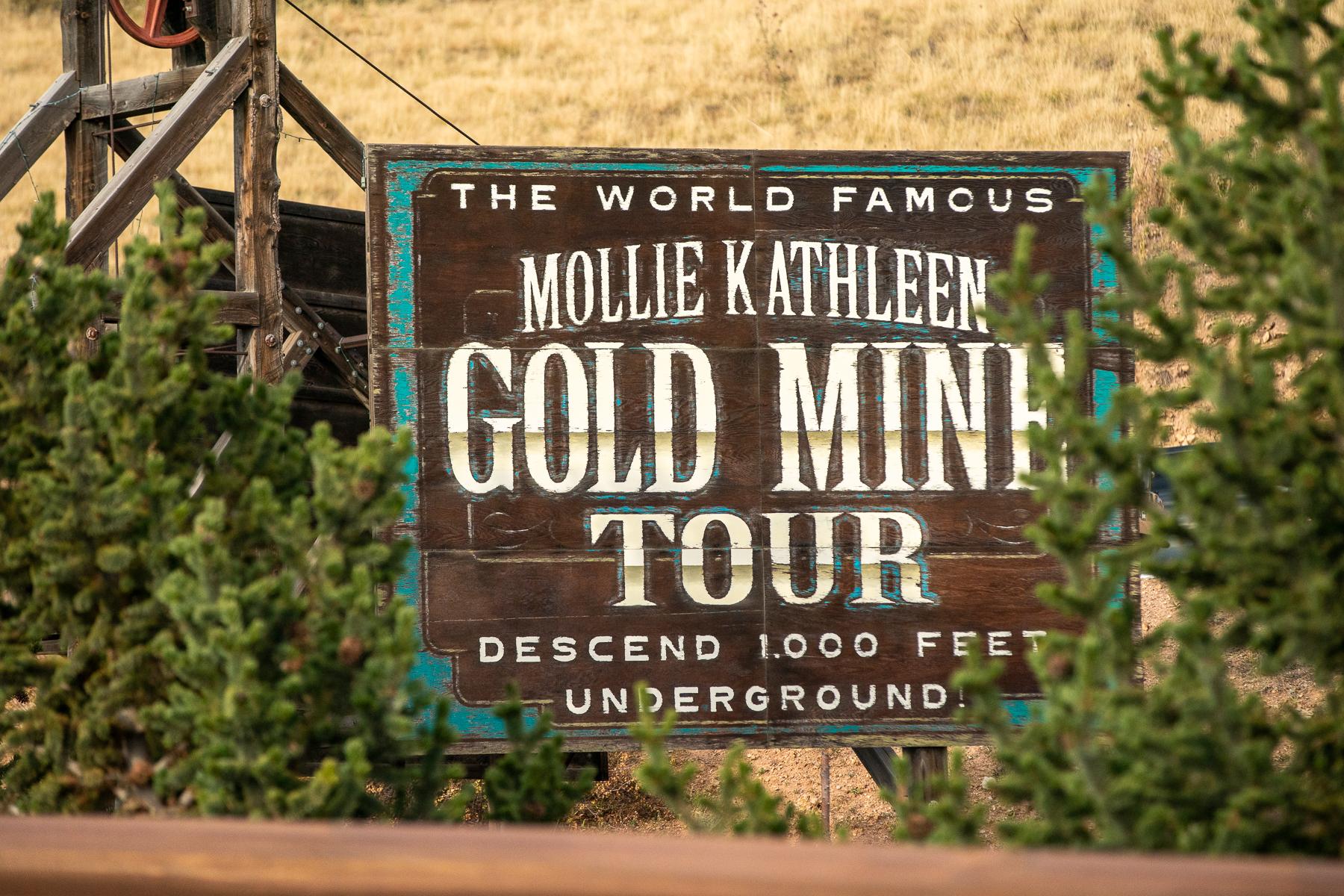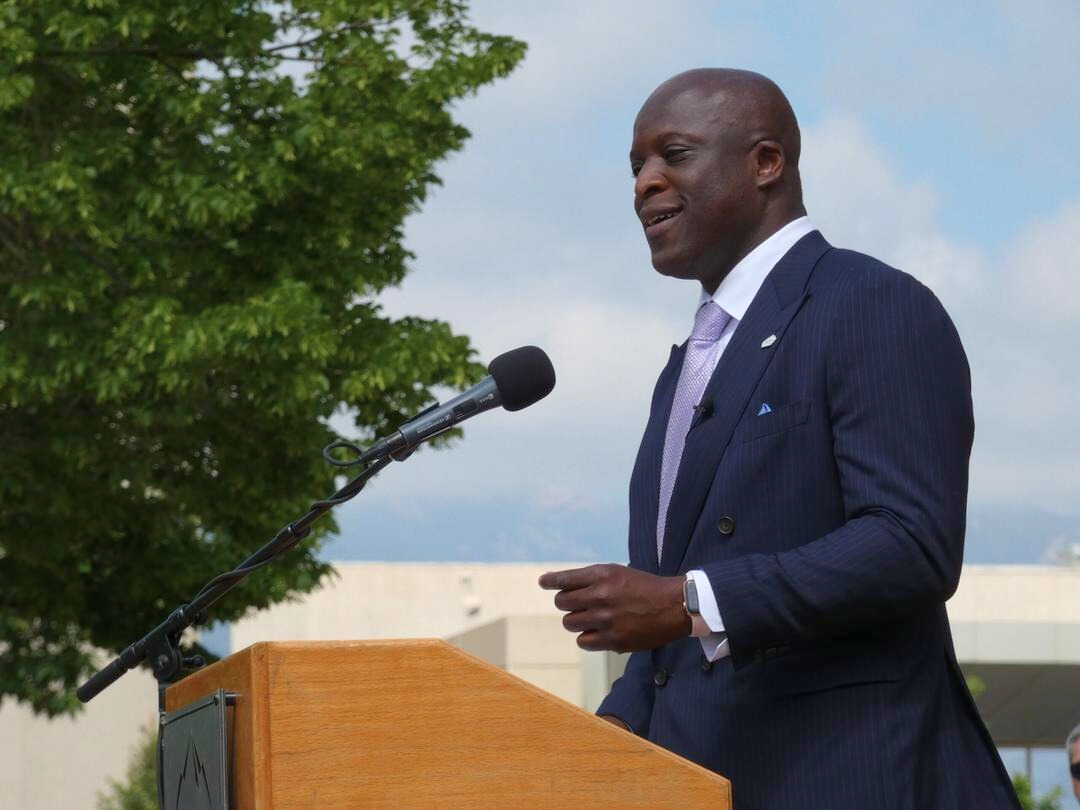The Mollie Kathleen Gold Mine Accident: Remembering A Mining Tragedy And Lessons Learned
When we hear the name Mollie today, it often brings to mind a variety of things, doesn't it? Perhaps you think of a modern financial service, helping businesses grow with quick payment setups and honest pricing, allowing you to manage payments right from a personal dashboard. Or, maybe your mind wanders to the vibrant sounds of Mollie B's music, her public performance schedule, or perhaps even her induction into the Iowa Polka Hall of Fame. And then there's Mollie, a convenient spot near downtown Aspen, offering easy access to cultural hubs and shopping. Yet, there's another story, a much older one, tied to a very different kind of Mollie—the Mollie Kathleen Gold Mine. This particular story, sadly, is about an accident, a somber moment in mining history that, you know, still carries weight.
It's quite a contrast, isn't it, from managing transactions online or enjoying lively music? The Mollie Kathleen Gold Mine accident, a historical event from a bygone era, reminds us of the risks and human toll often associated with the pursuit of precious resources. This incident, while not detailed in the modern contexts of Mollie we just mentioned, is a significant part of a larger conversation about industrial safety and the brave individuals who worked deep underground. We’re going to look back at this particular event, trying to understand what happened and, perhaps more importantly, what we can learn from it, even today.
So, this piece aims to shed some light on the Mollie Kathleen Gold Mine accident, exploring its context and the lasting impact it had on the mining community and, in a way, on safety practices generally. It's a chance to reflect on how far we've come in workplace safety, and how past events, like this one, arguably helped shape the present.
Table of Contents
- Unearthing the Past: The Mollie Kathleen Gold Mine
- The Day the Earth Shifted: The Accident Unfolds
- The Human Cost and Community Response
- Lessons from the Depths: Improving Mine Safety
- Remembering and Reflecting
- Frequently Asked Questions about the Mollie Kathleen Gold Mine Accident
Unearthing the Past: The Mollie Kathleen Gold Mine
The Mollie Kathleen Gold Mine, you know, holds a unique spot in the annals of American mining. Located high in the Rocky Mountains, near what would become a bustling mining town, it was, in some respects, a symbol of the gold rush era's ambition. Discovered in the late 19th century, this mine quickly gained a reputation for its rich gold veins, drawing hopeful prospectors and seasoned miners alike to its promising depths. The early days of the Mollie Kathleen were characterized by a flurry of activity, with men working long hours, often in challenging conditions, to extract the valuable ore that lay hidden within the earth.
Life around the mine, it's almost like, revolved entirely around its operations. Communities sprang up, supporting the miners and their families, creating a unique culture shaped by the demands of the industry. The Mollie Kathleen, like many mines of its time, relied on techniques that, by today's standards, might seem rudimentary, yet were considered cutting-edge then. This reliance on established methods, however, sometimes overlooked potential hazards, setting the stage for incidents that would later prompt significant changes in how mining was approached. It's important to remember that, at this time, safety protocols were still very much evolving.
The mine itself, a sprawling network of tunnels and shafts, was a testament to human perseverance. Miners descended hundreds of feet, using picks, shovels, and eventually dynamite, to chip away at the rock. The air was often thick with dust, and the constant threat of falling rock or gas pockets was a daily reality. This environment, while productive, was inherently risky, and it was within this very context that the Mollie Kathleen Gold Mine accident, a moment of profound sorrow, would eventually occur.
The Day the Earth Shifted: The Accident Unfolds
The day of the Mollie Kathleen Gold Mine accident, a rather ordinary Tuesday in the late autumn of 1903, started like any other. Miners descended into the earth, their lamps casting flickering shadows against the damp rock walls, each man focused on the day's work ahead. The morning shifts had been productive, with the sound of picks and drills echoing through the deep passages. Nobody, you know, could have predicted the sudden turn events would take, altering lives forever.
It was just past noon, apparently, when a deep rumble reverberated through the mine, far more profound than any blasting. A sudden, violent tremor shook the very foundations of the earth beneath them. Miners working in the lower levels, particularly near the main shaft, felt the immediate impact. Dust and debris began to fall from the ceiling, and then, with a terrifying roar, a massive section of the tunnel gave way. It was, quite literally, a moment where the earth seemed to betray those who worked within it.
The cause, as investigations would later suggest, was a combination of factors. Years of continuous excavation had, in a way, weakened the surrounding rock strata. There had been, some miners recalled, subtle signs of instability in the days leading up to the disaster, perhaps small rockfalls or unusual creaking sounds, but these had been dismissed as typical occurrences in a working mine. Coupled with what was later determined to be a significant, though localized, seismic event, the structural integrity of a critical section of the mine simply failed.
A Fatal Collapse and Its Immediate Impact
The immediate consequence of the collapse was devastating. Several miners working directly in the affected zone were, tragically, trapped beneath tons of rock and earth. The main shaft, a vital artery for access and ventilation, was severely compromised, effectively cutting off escape routes and fresh air to those deeper inside. Panic, naturally, spread among the survivors who managed to scramble to safer sections of the mine, their shouts and cries for help echoing through the dust-filled tunnels. It was, in short, a scene of utter chaos and profound fear.
News of the disaster traveled quickly to the surface, carried by a few fortunate miners who had been closer to the entrance or had managed to navigate through less damaged passages. The sheer scale of the cave-in, you see, was immediately apparent to those on the surface as plumes of dust billowed from the mine entrance. The initial reports were grim, suggesting multiple fatalities and a desperate situation for anyone still trapped below. This was, basically, the worst nightmare of any mining community brought to life.
The immediate impact extended beyond the mine itself. Families of the miners, who lived in the nearby community, rushed to the mine entrance, their faces etched with terror and despair. Wives, children, and friends gathered, anxiously awaiting any news, their hopes dwindling with each passing moment. The silence from the depths, broken only by the frantic shouts of rescuers, was, in a way, deafening, underscoring the gravity of the situation.
The Rescue Effort: A Race Against Time
Almost immediately, a desperate rescue effort began. Fellow miners, though shaken, bravely volunteered to descend back into the perilous depths, armed with lanterns, shovels, and an unwavering determination to reach their trapped comrades. The local community, too, mobilized quickly, with doctors, nurses, and volunteers rushing to the site to offer whatever assistance they could. It was, you know, a true display of community spirit in the face of immense tragedy.
The conditions for the rescuers were incredibly challenging. The air was thick with dust and the threat of further collapses loomed large. They worked tirelessly, often by hand, to clear debris, shore up unstable sections, and search for any signs of life. Every minute counted, as the lack of fresh air and the potential for injuries made time a critical factor. They were, in a way, fighting against the clock, a very real, very unforgiving clock.
Despite their heroic efforts, the scale of the collapse meant that reaching all the trapped miners was an almost impossible task. After days of relentless work, the rescue teams eventually had to concede that no more survivors could be found. The Mollie Kathleen Gold Mine accident, ultimately, claimed the lives of several men, leaving a deep scar on the community and serving as a stark reminder of the inherent dangers of mining in that era. It was, honestly, a heartbreaking outcome for everyone involved.
The Human Cost and Community Response
The human cost of the Mollie Kathleen Gold Mine accident was, as you might imagine, immeasurable. Each life lost represented a father, a son, a husband, or a friend, leaving behind families shattered by grief and sudden hardship. The small mining community, which had thrived on the promise of gold, was plunged into a period of profound mourning. The impact of such a disaster, you see, ripples through a community for generations, shaping its memory and its outlook.
Funerals were held, bringing together the entire town in shared sorrow. Collections were organized to support the widows and orphans left without their primary breadwinners. Neighbors helped neighbors, offering comfort, food, and practical assistance in a powerful demonstration of solidarity. This collective response, in a way, highlighted the strong bonds that often formed within these isolated mining communities, where mutual support was not just a kindness but a necessity. It was, basically, everyone helping everyone else get through something terrible.
Beyond the immediate grief, the accident also sparked a deeper conversation within the community and, eventually, among mine owners and government officials. There was, naturally, a demand for answers: What went wrong? Could it have been prevented? These questions, born out of tragedy, were, in some respects, the seeds of future safety reforms. The Mollie Kathleen Gold Mine accident, though a local tragedy, became a focal point for broader discussions about worker safety and accountability in the burgeoning industrial age.
Lessons from the Depths: Improving Mine Safety
The Mollie Kathleen Gold Mine accident, like many industrial disasters of its time, served as a painful but powerful catalyst for change. While the immediate aftermath was focused on recovery and mourning, the long-term effect was a heightened awareness of the critical need for improved mine safety. This tragedy, you know, really underscored the fact that the pursuit of resources couldn't come at such a steep human price. It was, basically, a wake-up call for the entire industry.
Investigators meticulously examined the site, trying to piece together the sequence of events that led to the collapse. Their findings, which highlighted inadequate shoring, geological instability, and perhaps a lack of proper geological surveys, contributed to a growing body of knowledge about mine hazards. These insights, in a way, became foundational for developing new safety standards and practices, pushing the industry towards a more responsible approach to extraction.
The lessons learned from the Mollie Kathleen, and similar incidents, eventually led to significant advancements in mining safety. It wasn't an overnight change, of course, but a gradual process of reform driven by both public outcry and the increasing understanding of engineering principles. This era marked a turning point, moving from a reactive approach to accidents to a more proactive stance on prevention.
Technological Advancements in Mining
One of the most significant outcomes was the push for better technology in mining. Engineers began designing more robust support systems for tunnels and shafts, using stronger materials and more sophisticated construction techniques. Ventilation systems were improved, ensuring a constant supply of fresh air and reducing the buildup of dangerous gases. New drilling and blasting methods were also developed, which were, arguably, safer and more controlled than older practices.
Lighting, too, saw considerable improvements. Miners moved from open-flame lamps, which posed explosion risks, to safer, enclosed electric lamps. This not only reduced fire hazards but also improved visibility, helping miners spot potential dangers more readily. These technological shifts were, in some respects, revolutionary for the industry, making the underground environment a little less perilous for those who worked there. It was, you know, a slow but steady march towards better conditions.
Moreover, there was a greater emphasis on geological surveying and mapping before and during mining operations. Understanding the rock formations and potential fault lines became paramount to planning safe excavation routes. This scientific approach, basically, helped prevent future collapses by identifying unstable areas before they became catastrophic.
Stricter Regulations and Oversight
Beyond technology, the Mollie Kathleen accident contributed to the demand for stricter government regulation of the mining industry. Prior to this, many mines operated with minimal oversight, leaving safety largely to the discretion of individual owners. The human cost of such laissez-faire attitudes became undeniable, leading to calls for legislative action.
New laws were gradually enacted, mandating safety inspections, requiring specific ventilation standards, and establishing protocols for emergency response. Government agencies were formed or expanded to oversee compliance, conducting regular checks and imposing penalties for violations. This shift towards formal regulation was, in a way, a recognition that worker safety was a public responsibility, not just a private concern.
Training for miners also became a more formalized process. Workers were taught about potential hazards, emergency procedures, and the proper use of safety equipment. This educational component was, you know, vital in empowering miners to protect themselves and their colleagues. The collective memory of events like the Mollie Kathleen accident surely fueled these efforts, ensuring that such tragedies would not be forgotten and their lessons would be applied.
Remembering and Reflecting
The story of the Mollie Kathleen Gold Mine accident, though a chapter from the past, serves as a powerful reminder of the sacrifices made in the pursuit of progress and resources. It's a story that, in a way, highlights the bravery of those who worked in dangerous conditions and the resilience of communities that faced unimaginable loss. Thinking about it, we really do owe a lot to those who came before us, especially when it comes to workplace safety.
Today, when we consider the advancements in mining safety, it's easy to overlook the historical events that paved the way for these improvements. But tragedies like the Mollie Kathleen accident were, essentially, the painful catalysts that forced society to confront the true cost of industrial development. They pushed for changes that ultimately saved countless lives in the years that followed.
So, as we look at modern industries, perhaps even the financial technology that Mollie payments offers, or the joy that Mollie B's music brings, it's worth taking a moment to reflect on the historical context of how industries evolve. The Mollie Kathleen Gold Mine accident stands as a somber yet important part of that history, urging us to never forget the lessons learned and to always prioritize human well-being. To learn more about mine safety history on our site, and link to this page historical industrial accidents for more information. You can also explore general information about historical mining practices at a resource like National Park Service's Mining History.
Frequently Asked Questions about the Mollie Kathleen Gold Mine Accident
Here are some common questions people often ask when learning about the Mollie Kathleen Gold Mine accident:
What caused the Mollie Kathleen Gold Mine accident?
The accident was, basically, attributed to a combination of factors, including the weakening of rock strata from extensive excavation over time and a localized seismic event. This led to a significant structural collapse within the mine, trapping and tragically claiming the lives of miners. It was, you know, a sudden and devastating failure of the ground itself.
When did the Mollie Kathleen Gold Mine accident occur?
The Mollie Kathleen Gold Mine accident took place in the late autumn of 1903. This period was, in a way, a time when industrial safety standards were still very much in their early stages, making such incidents unfortunately common in various industries.
What were the long-term impacts of the Mollie Kathleen Gold Mine accident?
The accident had significant long-term impacts, contributing to a greater awareness of mine safety needs. It spurred advancements in mining technology, such as improved support systems and ventilation, and also led to the implementation of stricter government regulations and oversight for mining operations. It was, essentially, a catalyst for much-needed change in the industry.

Mollie Kathleen Gold Mine Lift Malfunction Leaves One Dead

Teller County Sheriff identifies man killed in Mollie Kathleen tourist

Teller County Sheriff identifies man killed in Mollie Kathleen tourist